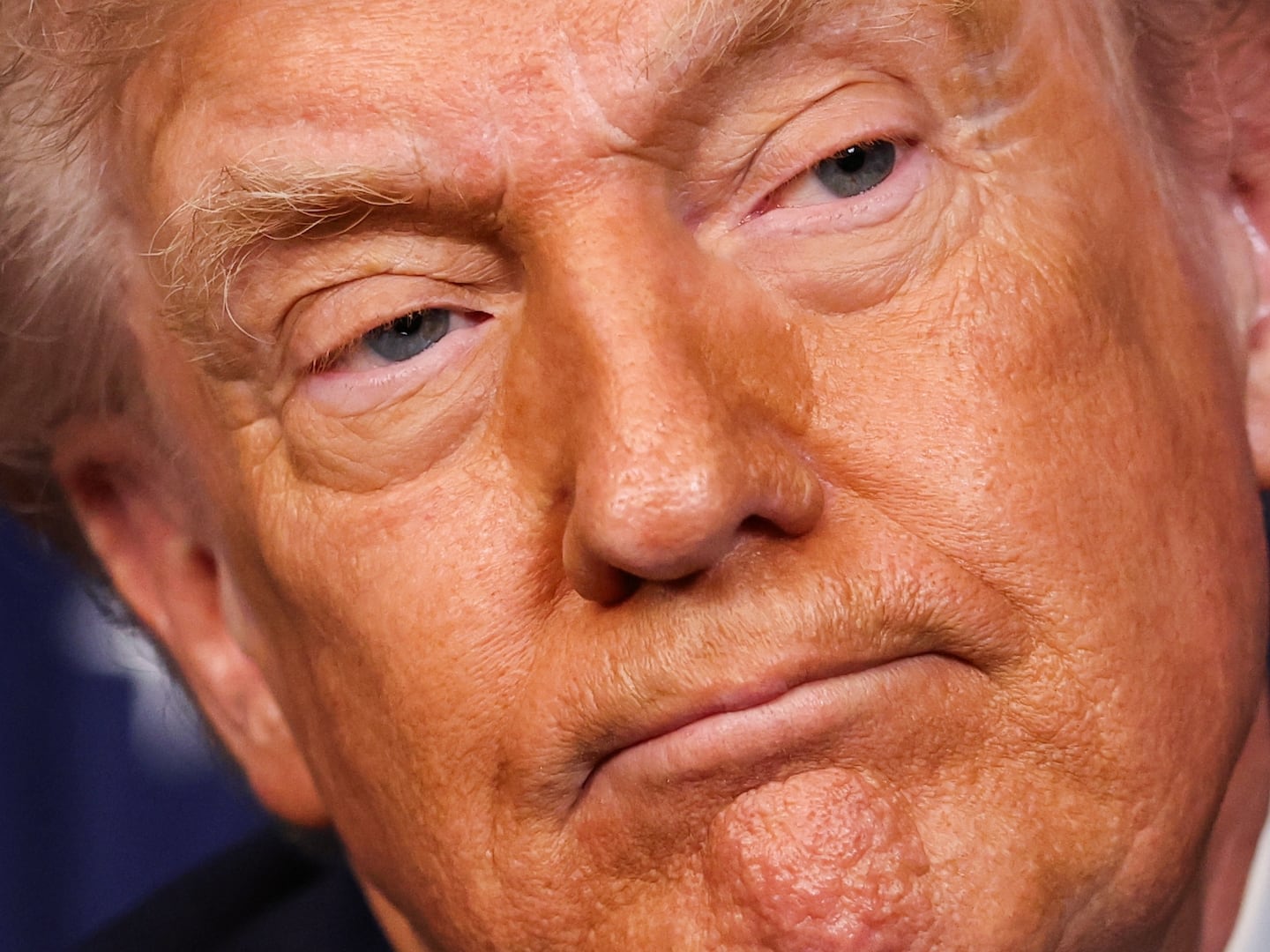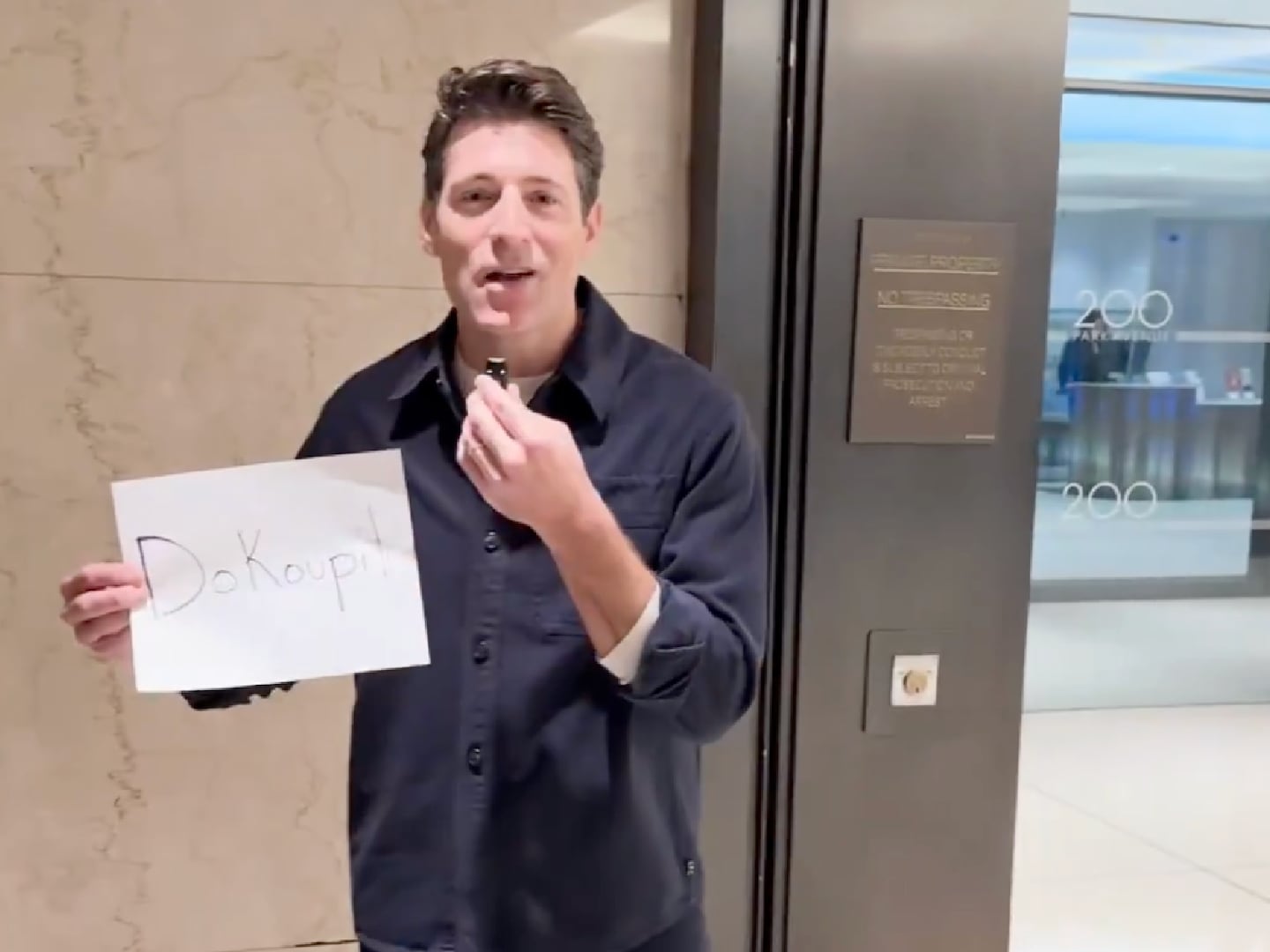It seems axiomatic that the past and the future cannot exist at the same time. Thanks to the space-time continuum, people from different centuries cannot live simultaneously. The same goes for a nation, which cannot survive pulling toward the future and toward the past at once.
The United States is at a fulcrum. We are two countries—one lurching for the future, one yearning for the past—that cannot live together, because we can’t be both things. Donald Trump may have brought on the breaking point, but he didn’t create the schism. It was already there for him to exploit. It was there during enslavement, when President Lincoln declared that the country could not survive half slave, half free, and it took a civil war to force these two nations: one brutal but pastoral, the other urban and focused on finance and technological innovation, often with its own kind of cruelty, to remain under one roof.
Today, Trump is speeding us toward decline—the very decline his supporters so feared. His imperious leadership; his family’s grubby pretense at royalty and the apparent mad dash among members of his cabinet and White House team to hawk their positions for cash and luxuries have the feel of a decrepit regime looting the palace in its final days; stuffing the silver in their coats as they flee into exile.
Trump’s announcement of anachronistic trade tariffs this week was portrayed as out of the blue, but it was no such thing. Trump ran on ending multilateral trade agreements and recreating an America of the distant past that culls every human and material resource from within. Republicans who are now in full blown freakout over a potential trade war voted for exactly what they’re getting.
In every way, Donald Trump is a president built for the past; a benighted, late 19th Century figure who spun his supporters a tale that he could restore a bygone era when coal fires burned, factories hummed, steel mills belched out soot and opportunity and a (white) man with a sturdy back, a high school diploma and a song in his heart could buy a little house, marry a little wife and have 3 cherry-cheeked kids he didn’t ever have to cook or clean for, plus if he can afford it, a hot mistress on the side. Trump is the slovenly but brash, gold-plated emblem of a time when in the imagination of his followers, black women hummed a tune while they cleaned your house or did the washing, black men tipped their hat on the street but didn’t dare look you in the eye, and neither would dream of moving in next door. A time when women asked their husbands for an allowance, not their boss for a promotion, men were “allowed to be men” complete with ribald jokes and a slap on the fanny for the pretty secretary at work, and there were no gays, no trans people, no birth control … they somehow just didn’t exist! The rural folks were the salt of the earth and we only let in “a certain kind of immigrant” whose only goal was to shake off his ethnicity and “assimilate.” Everyone went to (separate) church on Sundays and everyone “got along.” It’s a plasticine world that for many must feel like it truly existed, though of course it never did.
Going backward, to a world without ambiguity on race, gender and work is a powerfully attractive idea, particularly for those who fear losing their cultural and social hegemony as the nation browns, and their economic ascendancy as technology creates new industries they scarcely understand.
But here’s the thing: the past really is past. Coal is still a dying industry and America will never again have an industrial revolution. It’s other countries’ turn to do that now. Black and brown people aren’t giving up our dignity, including the right to protest and to survive mundane encounters with police. Immigrants aren’t going away (and in fact we need them to keep the economy and the safety net flush). LGBT people aren’t going back into the closet. And women are staying in the workforce, with many aiming to become the CEO, while insisting on hanging onto our reproductive liberty. There is indeed a sizable minority of Americans who want to go back to the old times. But we aren’t going back.
Neither is the world.
While we regress, the rest of the planet will go right on trading without us. Tariffs on other countries will invite tariffs on us (Europe is already considering levying them on everything from Levi’s to Kentucky bourbon to Harley Davidson motorcycles). And protectionism will protect zero American jobs, while hiking the prices of everything we buy that’s made with aluminum and steel, from cars to washing machines to pots and pans. Donald Trump, who never built a building with American steel—preferring the Chinese variety instead—doesn’t care about any of that. He only cares about the show. And he always gives his people a good show. But the economy does care. And America will pay a price for their P.T. Barnum president and his temper tantrums.
Meanwhile, there is another America, which is busy concerning itself with the future. It’s the America that produces two-thirds of this country’s economic output, though it represents just hundreds of counties versus Trump’s thousands. It’s the America that objects to Russian interference in our elections, that welcomes immigrants and their economic contributions, that recognizes that even ancient institutions like marriage can modernize, that views women’s full equality as a boon not a threat to civilization, that doesn’t want to be ruled from Biblical texts or by a savage gun lobby, and that wants America to be a part of the world, not it’s creaky, cranky, lonely adversary.
In particular, young Americans—Millennials and post-Millennials, have had enough of our tired wrangling. They’re sick of the Baby Boomers’ social agonies and the clenched grip of the World War II generation on American social and political life. They want an end to throwback rigidity on guns, gays, and religion. And they neither respect nor revere the current president of the United States.
Far from becoming more conservative with time, young Americans are staying right where they were when Barack Obama was first elected—on the left of center—if not growing more progressive. It’s why Republicans are so keen to suppress their votes. Where my generation, Generation X, polls at 51-41 percent blue over red, for Millennials the Democratic-over-Republican preference is a daunting 62-29, while Boomers are 48-46 D versus R and their parents, in the Silent Generation, tilt Republican 51 to 45 percent. The main reason for the increasing liberalism of the younger cohorts? These generations (including the youngest group, Generation Z) are chock full of young people of color. They are the most racially diverse generation in modern American history. And by next year, Millennials will be the single largest generational group in America, with their ranks swelled by immigrants (which explains the urgent right wing push for mass deportation.)
Does anyone really believe they will somehow morph en-masse into NRA-obedient, Fox News-zombie, anti-gay, anti-woman, anti-immigrant, maniacal healthcare destroyers who’ll vote for serial sexual predators? Sure, the so-called alt-right can nab some Millennials to conduct their meme wars and more extreme members for their torches and khakis brigades, but truth be told, the majority of their peers are abandoning them or even refusing to date them. Young Republicans are more likely than their older counterparts to have left the party after Trump’s election, with nearly a quarter of those aged 18 to 29 doing so during Trump’s first six months in office. They live within a popular culture that tilts overwhelmingly to the other side; one where NBA players are hanging out at the museum rather than going to the White House, and openly calling the Republican president a bum.
With its broad and seemingly absolute power over the country, the Republican Party may not feel like it is dying, but it is dying nonetheless, at the hands of youth and multiracial population growth. The GOP can rush to install voter suppression traps and other restraints on change to try and keep the tide from coming in. But it will come anyway.
For the Democrats, the challenge is that they haven’t exactly built themselves for the future either. They will benefit from the coming wave because they are the default vehicle for the futurists’ ambitions. But that doesn’t mean they won’t have to change as well, by delivering on the soon-to-be largest generation’s demands, so they truly believe that political participation is a meaningful path to progress.
Perhaps the biggest challenge future-facing America faces is that past-craving America has a dogmatic and consistent voting base and a determined and persistent ally: Russia, which alongside its embedded mercenaries from the so-called “alt right” are harnessing maturing modern tools like social media to keep the futurists at bay. But we won’t have a president who cuddles up to Russia and neo-fascists forever. Eventually, the fight against them and their propaganda will be joined in earnest and won.
The future is coming. It cannot live alongside the past. And in the end, it cannot be stopped.






